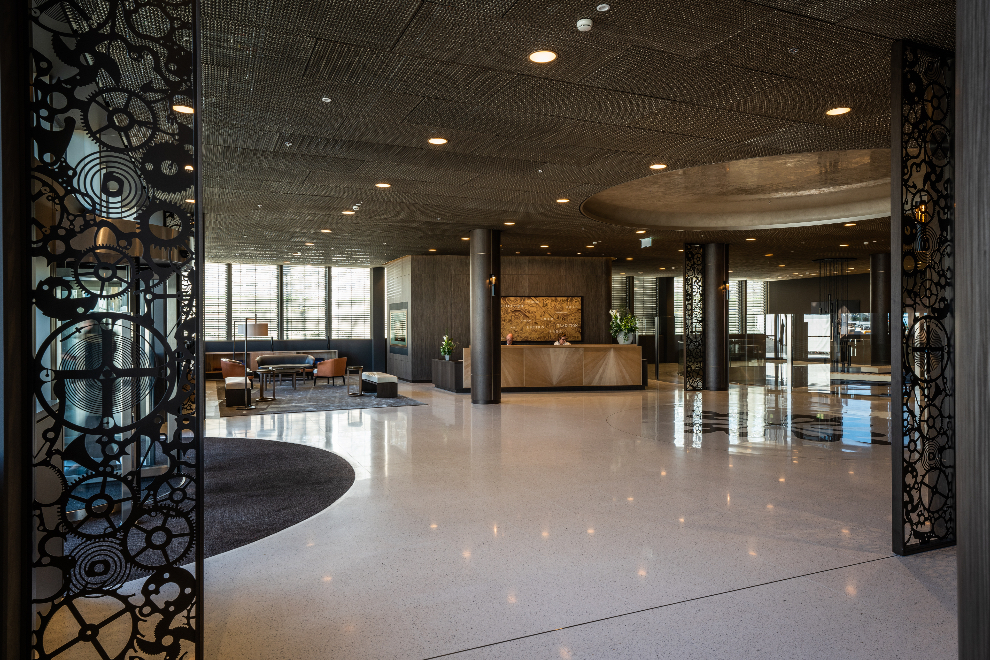
If you know anything about the practical side of making watches, you know that production is a sensitive topic. You might, for example, see news about some massive new structure that watchmaker A is building, and naturally wonder how many more watches will be made under that roof. Now, if you know a little more about watchmaking, it will not surprise you to learn that more watches are not on the cards – at least not right away, but certainly never to the extent that production will suddenly double.
While visiting the new Patek Philippe facility in Geneva’s Plan-les-Ouates neighbourhood (affectionately known as Plan-les-Watches or Plan-les-Watch), we are shown a staggering number of CNC (computer numerical control) machines. It was literally a show-stopping moment for the press tour, organised for Southeast Asia media, especially for those of us who understood that CNC machines can run 24/7. For a moment, this writer considered just how many brass movement blanks could be produced at the new PP6 facility with the multi-axis CNC machines. That foolish moment passed quickly though because Patek Phlippe helpfully informed us that gears, pinions and arbours (also produced here, with different CNC machines in a process called bar-turning, where the raw material bars turn but the tools are fixed) needed to be finished by hand. Anything with teeth, really. To be blunt here, this literally means that every spoke of every wheel gets some individual attention, however miniscule it might be.
Pulling back a little from this specific close-up, the reality of watch manufactures is often surprising because these sites are often huge – the new facility we visited stands 34m high, with 10 storeys (four are underground, which Patek Philippe literally describes as subterranean, in good old secret lair style) for a total of 133,650sqm. Obviously, the site is massive yet Patek Philippe’s production volume of 70,000 watches (that is the top-end estimate; Patek Philippe does not disclose specific production numbers). What is required here is an establishing scene, so let us take you back to 2019, in the Before-Times – let us go back even further than this, for a bit of context.
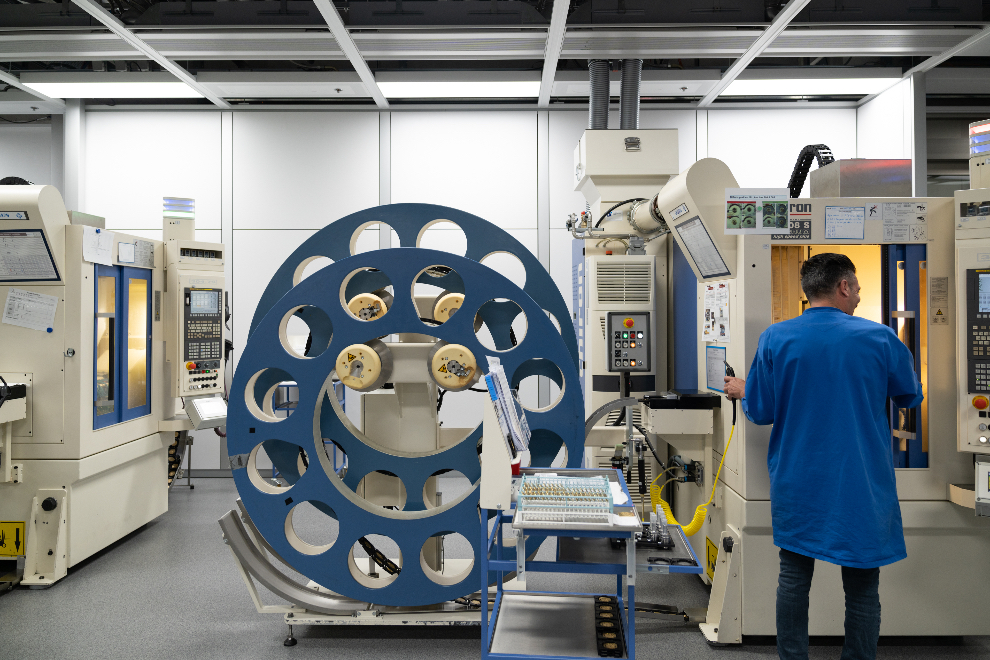
In The Beginning…
Patek Philippe has been on mission to expand and enhance its capabilities since the firm came to life in 1839, and certainly since the Stern family took over in the 1930s. In all this time, wealth has become more democratised, and timepieces found themselves on the wrists of more people than ever before. Bear this in mind when you visit the Patek Philippe Salons in Geneva – one of three owned and operated by the brand itself – because this space used to house the watchmakers. When the advent of quartz technology put paid to many a storied name, and even sent the watchmaking trade into decline, those firms that soldiered on – Patek Philippe amongst them – found that they had to take steps to protect the entire industry. As a matter of fact, the Patek Philippe Museum occupies a space formerly used by one of its suppliers, now turned in-house division – the famed bracelet-maker Ateliers Reunis. While both Salons and Museum are impressive, they cannot compare with the most recent addition to Patek Philippe’s manufacturing facilities.
By the time Thierry Stern succeeded as President of Patek Philippe, he was building on the work of his predecessor, his father Philippe. The elder Stern had announced the building of a manufacturing site at Plan-les-Ouates in 1996, and that was ready by the time the younger Stern took over in 2009. To make a long story somewhat shorter, Patek Philippe decided that even more workspace was needed, but had to fit in the existing footprint of site; the existing facilities were contemporary but simply not keeping pace with future needs. The solution unfolded in multiple stages, and work on the building known as PP6 (the subject of this story) began in earnest in 2015. Obviously, Thierry Stern wanted something big, and PP6 fits the bill. While this itself is a great story, we are more interested in what might enlighten collectors and those still waiting for their shot at a Patek Philippe watch.

Returning to the CNC machines and the shaping of parts with teeth, this is actually where one can learn something interesting and possibly specific to Patek Philippe. Not singularly distinctive because the manufacture is the greatest and best or whatever but just a rational method of working that the Geneva brand has adopted. The gist of it is this: the base plates made here are not meant for complicated movements, but the parts with teeth are shared between all types of calibres. Different machines produce plates and bridges for complicated watches. Why should this be so? The explanation given, and what we know ourselves, is that complicated movements components, including plates and bridges, are thicker than normal. These are filed down to the appropriate dimensions (still thicker than standard movements) because the skilled hands of a craftsperson can handle more complex and delicate actions than even CNC machines can.
Worked By Hand
The tourbillon bridge is a great and commonly used example, because the rough part is worked over by hand quite intensely. Extra material also helps ameliorate minor errors, which are inevitable. Gears and pinions, on the other hand, can be made to one standard specification. Not that any brand discusses matters like errors but they do happen because if you take off too much while bevelling, for example, there is no going back; this writer knows that from experience, given that tolerances here are beyond what the naked eye can apprehend. Suffice to say here that those who are looking for reasons why Patek Philippe might be production-limited – even with automated processes in the mix – can find one important point in the hobbing process, and what follows after. Hobbing is the technical term for the production of teeth on parts.
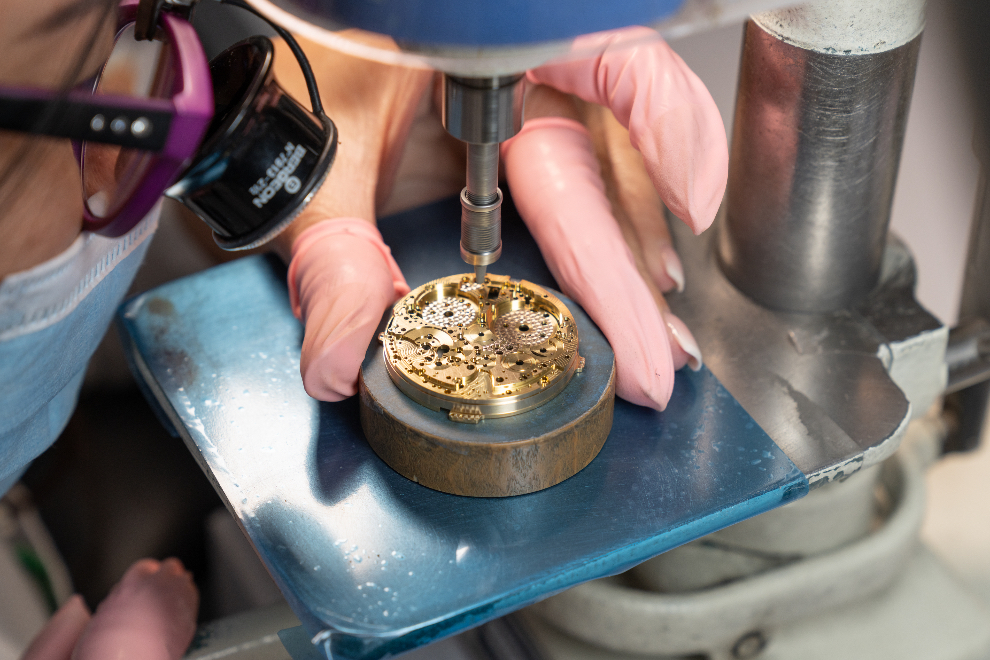
Unfortunately, space-constraints limit us as much as they do a watchmaker such as Patek Philippe, so we must move on for a little bit to bracelets and metiers d’art. We would have loved to tell you more about movement assembly but that was not on the cards on this occasion, and this operation actually takes place in another building here at the Plan-les-Ouates manufacture. On that note, we would be remiss not to mention the Advanced Research department at Patek Philippe, which is on the third floor of PP6. Unfortunately, this was not part of the tour this time, although we hold out some hope that it will be in future. Having a reason to return to the Patek Philippe manufacture is no reason to complain.
And so, on to bracelets we go, and this one will be popular with the broader watch enthusiast world. Of course, the bracelets we saw in production were for the. Nautilus, which might be tied for most exclusive and most famous watch bracelet in the world – the GOATs of bracelets, one might say. It is always amazing to see bracelets taking shape, link by link, although it must be said that the raw material here arrives in the form of a bar that is in the rough dimensions required (complete with a groove in the middle). Famously, there are 55 steps involved in making the Nautilus bracelet, and Patek Philippe did set aside quite a bit of time to get into this. Now, you might wonder why all the fuss over bracelets but of all the manufactures we visited this year, Patek Philippe is alone in showing the world how it makes its bracelets in its own manufacture. Indeed, most watch brands outsource the production of bracelets to a specialist, but Patek Philippe acquired its own supplier many years ago (as noted briefly above).
Case Study
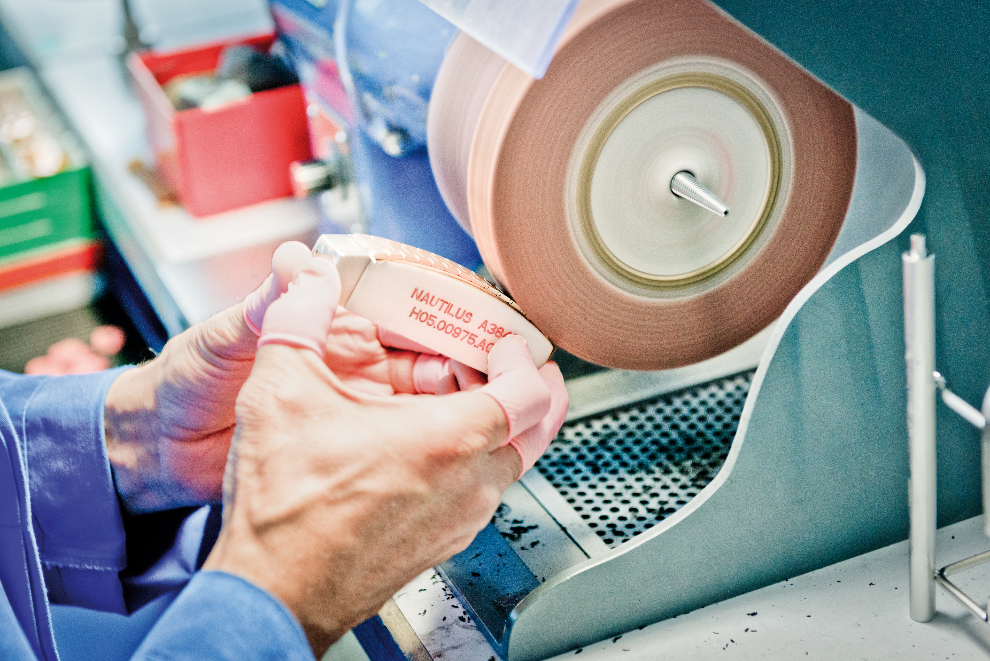
To continue with the making of bracelets, the shaped bars are sent into the bar-fed machining centre to form individual links. This is a milling process, to keep things succinct, and involves many quality-control steps as well as hand-correction, but these are not part of the 55 steps. As you know, there are two main parts to the bracelet links – the H-shaped bit and the centre link – and these are individually worked before being assembled (with pins). Even after being assembled, there is still buffing and chamfering to be done, and the centre links are actually polished further to achieve the signature mirror polishing. This is done by protecting the H-links with perforated masking tape and polishing the length of the assembled bracelet.
Moving on to case-making, we have just about enough space to get into another famous Patek Philippe signature, the hobnail case- middle decoration (which also appears on bezels sometimes). This is a Clous de Paris guilloche technique done with a hand operated comb and plane lathe. You will have to imagine the technique required to maintain the right amount of pressure here (the part moves while the lathe remains still). On the making of the cases themselves, this is pretty straight-forward, with bar-turning (just as movement components are made), milling, stamping and polishing in the mix. We note for the record that Patek Philippe is also amongst the few watchmaking firms that produce their own cases, and have invested heavily to bring this know-how in-house.
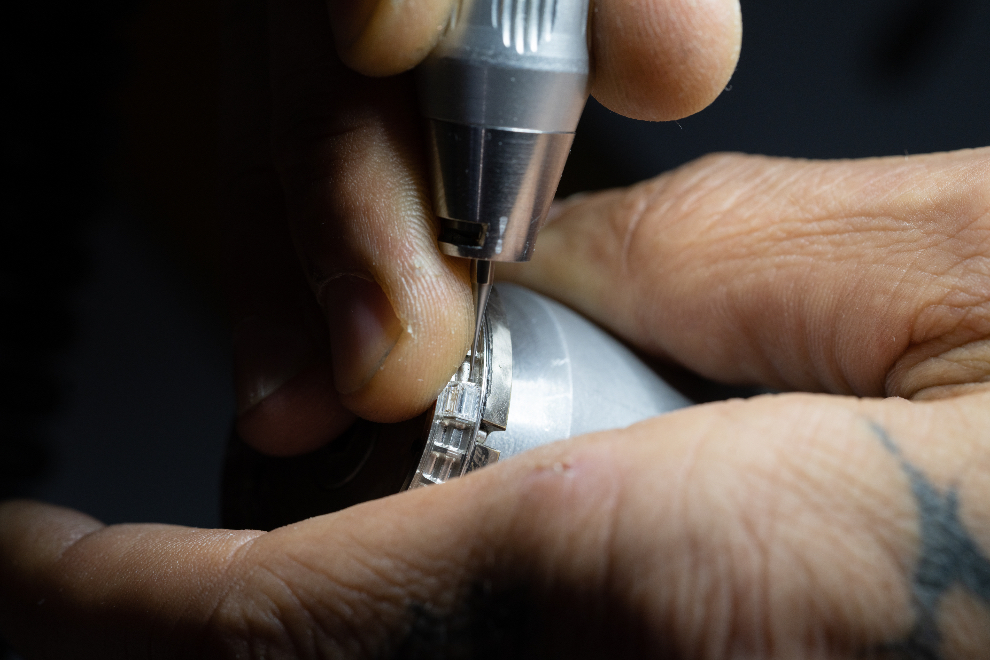
Finally, we will spare the last word for Rare Handcrafts, even though it means we must leave complications prematurely here and have just a word or two left for gem-setting in captions. Our tour included a demonstration of champleve enamelling, which is only one of 12 techniques that all enamellers at Patek Philippe are proficient with. The champleve technique involves painting inside the lines, which are basically cavities carved into a dial, and this technique is particularly suited to letting enthusiasts have a go, as you can see here.
A demonstration of all techniques would either be cursory or take days (if you visited the Grand Exhibition [in Tokyo or in Singapore in 2019], this part of the tour is a bit like that segment), and one must bear in mind that Patek Philippe also has other artisans working on dials at specialist dialmaker Cadrans Fluckiger in St. Imier. It also engages external specialists such as Anita Porchet, whom some of you will have met or seen in action in Singapore, while also allowing other artisans to work from home on their own machines.
On that note, the Patek Philippe manufacture is a sort of home for watches, where they are lovingly prepared to be sent out into the world. Spare a thought for this the next time you look at your own Patek Philippe because someone at home in Geneva is trying to imagine you finding immense pleasure in said watch. If a Patek Philippe is still on your horizon, we hope this story plays its part in convincing you that it is worth inching towards that imaginary line.
This article first appeared on WOW’s Legacy 2024 issue
For more on the latest in watch reads, click here.

